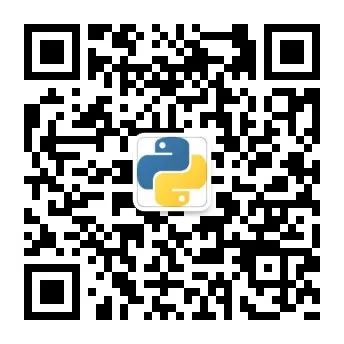可以将文章内容翻译成中文,广告屏蔽插件可能会导致该功能失效(如失效,请关闭广告屏蔽插件后再试):
问题:
Ok, so I have this, but it wont work:
@interface UILabel (touches)
@property (nonatomic) BOOL isMethodStep;
@end
@implementation UILabel (touches)
-(BOOL)isMethodStep {
return self.isMethodStep;
}
-(void)setIsMethodStep:(BOOL)boolean {
self.isMethodStep = boolean;
}
-(void)touchesBegan:(NSSet *)touches withEvent:(UIEvent *)event {
if(self.isMethodStep){
// set all labels to normal font:
UIFont *toSet = (self.font == [UIFont fontWithName:@"Helvetica" size:16]) ? [UIFont fontWithName:@"Helvetica-Bold" size:16] : [UIFont fontWithName:@"Helvetica" size:16];
id superView = self.superview;
for(id theView in [(UIView *)superView subviews])
if([theView isKindOfClass:[UILabel class]])
[(UILabel *)theView setFont:[UIFont fontWithName:@"Helvetica" size:16]];
self.font = toSet;
}
}
@end
If I take out the getter and setter methods then it doesn't work it tells me I need to create some getter and setter methods (or use @synthesize - but putting @synthesize in the @implementation throws an error too). But with the getter and setter methods I get an EXC_BAD_ACCESS and a crash. Any ideas? Thanks
Tom
回答1:
It is not possible to add members and properties to an existing class via a category — only methods.
https://developer.apple.com/library/content/documentation/General/Conceptual/DevPedia-CocoaCore/Category.html
One possible workaround is to write "setter/getter-like" methods, that uses a singleton to save the variables, that would had been the member.
-(void)setMember:(MyObject *)someObject
{
NSMutableDictionary *dict = [MySingleton sharedRegistry];
[dict setObject:someObject forKey:self];
}
-(MyObject *)member
{
NSMutableDictionary *dict = [MySingleton sharedRegistry];
return [dict objectforKey:self];
}
or — of course — write a custom class, that inherits from UILabel
Note that nowadays an associated object can be injected during runtime. The Objective C Programming Language: Associative References
回答2:
Checked all answers and did not find the most common solution:
#import <objc/runtime.h>
static void const *key;
@interface ClassName (CategoryName)
@property (nonatomic) BOOL myProperty;
@end
@implementation ClassName (CategoryName)
- (BOOL)myProperty {
return [objc_getAssociatedObject(self, key) boolValue];
}
- (void)setMyProperty:(BOOL)value {
objc_setAssociatedObject(self, key, @(value), OBJC_ASSOCIATION_RETAIN);
}
@end
回答3:
There is actually a way, which may not be ideal, but does work.
For it to work, you will need to create a category for a class X and can only be used on subclasses of the same X (e.g. category UIView (Background) can be used with class MyView : UIView, but not directly with UIView)
// UIView+Background.h
@interface UIView (Background)
@property (strong, nonatomic) NSString *hexColor;
- (void)someMethodThatUsesHexColor;
@end
// UIView+Background.h
@implementation UIView (Background)
@dynamic hexColor; // Must be declared as dynamic
- (void)someMethodThatUsesHexColor {
NSLog(@"Color %@", self.hexColor);
}
@end
Then
// MyView.m
#import "UIView+Background.h"
@interface MyView : UIView
@property (strong, nonatomic) NSString *hexColor;
@end
@implementation MyView ()
- (void)viewDidLoad {
[super viewDidLoad];
[self setHexColor:@"#BABACA"];
[self someMethodThatUsesHexColor];
}
@end
Using this method, you will need to "redeclare" your properties, but after that, you can do all of its manipulation inside your category.
回答4:
You could inject an associated object during runtime.
#import <objc/runtime.h>
@interface UIView (Private)
@property (nonatomic, assign) CGPoint initialTouchPoint;
@property (nonatomic, strong) UIWindow *alertWindow;
@end
@implementation UIView (Private)
@dynamic initialTouchPoint, alertWindow;
- (CGPoint)initialTouchPoint {
return CGPointFromString(objc_getAssociatedObject(self, @selector(initialTouchPoint)));
}
- (void)setInitialTouchPoint:(CGPoint)initialTouchPoint {
objc_setAssociatedObject(self, @selector(initialTouchPoint), NSStringFromCGPoint(initialTouchPoint), OBJC_ASSOCIATION_RETAIN);
}
- (void)setAlertWindow:(UIWindow *)alertWindow {
objc_setAssociatedObject(self, @selector(alertWindow), alertWindow, OBJC_ASSOCIATION_RETAIN_NONATOMIC);
}
- (UIWindow *)alertWindow {
return objc_getAssociatedObject(self, @selector(alertWindow));
}
@end
回答5:
EDIT: Warning: This property would have a unique value for all the instances of the class.
This worked for me, but only because I had only one instance of this class in my app.
#import <AVFoundation/AVFoundation.h>
@interface AVAudioPlayer (AstroAVAudioPlayer)
@property (nonatomic) BOOL redPilot;
@end
#import "AVAudioPlayer+AstroAVAudioPlayer.h"
@implementation AVAudioPlayer (AstroAVAudioPlayer)
BOOL _redPilot;
-(void) setRedPilot:(BOOL)redPilot
{
_redPilot = redPilot;
}
-(BOOL) redPilot
{
return _redPilot;
}
@end
回答6:
A solution that I found to this was to just give each object that you want flagged a unique tag.
I made a UILabel category to add custom fonts to all my labels but on some i wanted them to be bold so i did this ->
- (void) layoutSubviews {
[super layoutSubviews];
[self addCustomFont];
}
- (void) addCustomFont {
if (self.tag == 22) {
[self setFont:[UIFont fontWithName:SEGOE_BOLD size:self.font.pointSize]];
}else{
[self setFont:[UIFont fontWithName:SEGOE_LIGHT size:self.font.pointSize]];
}
}
回答7:
It seems as if since Xcode 7 (7.0.1, 7A1001), properties are supported in categories. I noticed that Xcode generates categories now for Core Data subclasses.
For example, I got the files:
Location+CoreDataProperties.h
#import "Location.h"
NS_ASSUME_NONNULL_BEGIN
@interface Location (CoreDataProperties)
@property (nullable, nonatomic, retain) NSNumber *altitude;
@property (nullable, nonatomic, retain) NSNumber *latitude;
@property (nullable, nonatomic, retain) NSNumber *longitude;
@end
NS_ASSUME_NONNULL_END
Location+CoreDataProperties.m
#import "Location+CoreDataProperties.h"
@implementation Location (CoreDataProperties)
@dynamic altitude;
@dynamic latitude;
@dynamic longitude;
@end
So looks like properties in categories might work now. I haven't tested on non-Core Data classes.
What I've noticed is that they do include the category file back into the original class:
Location.h
@interface Location : NSManagedObject
@end
#import "Location+CoreDataProperties.h"
This allows the original class to edit the properties specified by the category.



